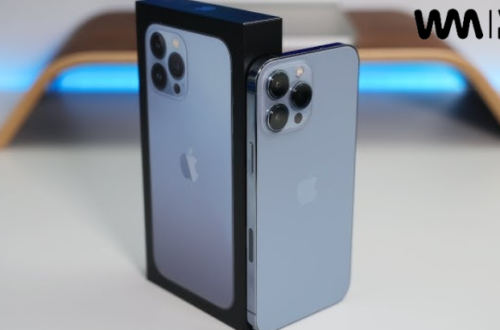Life is now even more demanding and any working person needs to have his/her working plan well organized. Good planner to assist you in your activity, meeting and personal objectives of the day are the best. But anyone can become a planner – yes, you heard that right. To maximize your productivity there are certain elements of your daily planner that must meet the challenges of a busy working week. These strings are necessary features out of which including the use of the weekly planner app can greatly improve the planner’s functionality. It provides a schedule of activities on a daily basis, each week to give you a clean outlook on your agenda. If you are looking for the daily planner for your professional life, we bring you five essentials features that should not be missed.
1. Advanced Time Monitoring Resources
, as we know, is the key to increasing effectiveness, which is especially true for those people who now often find themselves with several positions. A daily planner must include all the means that would assist you in tracking and planning for the time well.
Hourly Scheduling
There is an hourly scheduling to help you divide your day into useful segments of time. Subdividing your work for every hour, you guarantee that your day is optimized and no time is wasted. This is especially helpful for those who are working and have to juggle through meetings over time and deadlines.
Task Prioritization
A planner should always have a sort of to-do list since time is money. The method may as simple as numbering tasks based on the urgency of the tasks, or it may as complex as the Eisenhower Matrix; irrespective of the method used, being able to understand urgency and importance of tasks means that important responsibilities get accomplished first.
Time Blocking
Equally, time blocking is the other part of the application that allows one to schedule particular hours on activities. The following serves to reduce interferences and enhance concentration so as to increase efficiency in delivery of tasks.
2. Goal-Setting Framework
In particular, it is necessary to indicate that the proper setting and the management of goals and objectives is significant to attain sustainable outcomes. Every planner that one would use should not only address the day to day activities but also the end goals which are being worked towards.
Acute- and Chronic-Orientation
To be specific, search for a planner in which you may put short-term and long-term objectives. Using both processes enables you to have an easier way of stratifying big goals into more achievable subgoals, which can be tracked over time.
Milestone Tracking
By including a milestone tracking feature you can track your progress towards your milestones. This can be in the form of checklists, progress track indicators, or/and memo sections within which you may write some accomplishment notes. A very important activity that can help one is the constant revision of the set milestones with a view of ensuring that one does not loses focus.
Goal Reflection
A planner with a section raised for goals makes you spend some time reviewing your progress and shift gears if need be. Such practice assure one to remain relevant to your goals and be in a position to make any changes needed in your situation.
3. Flexibility and Customization
There is nothing wrong with a generic planner, but there has to be something that fits every given professional. Hence, one would expect a daily planner to have flexibility as well as a lot of customization, into what a person wants it to be.
Customizable Layouts
A planner with customizable layouts gives the ability to the user to shape the pages according to need. Including a minimalistic layout plan or requiring more sub-items for notes, expenses, or habits, an adjustable planner fits into an individual’s work process.
Modular Sections
It has the types of the page and the modular sections enable the addition or removal of pages to satisfy the needs of the customer. This feature is especially useful for people who may have a flexible working timetable or may have to add other fields for some tasks or meetings.
Personalization Options
Options of personalization, including the option of selecting the cover design, colors, or the owner’s name or initials will help the planner to feel like the owner is using a personal tool instead of a commercial product. As for the user, this could make him/her develop an affinity to the planner and therefore, make him/her use it often.
4. Portability and Durability
A planner is only as good as the last time you saw it or the next time you were expecting to use it. Hence flexibility and robustness are components that enhance the planner’s ability to survive the abuse from the users.
Compact Size
This product has a small size in comparison to those larger planners that are usually very bulky to carry around. It should be truly portable so it could be carried in a briefcase or bag or even a large coat pocket where it can be easily retrieved during a working day.
Sturdy Construction
The materials in the planner that is ideal to be carried around should be able to withstand wear and tear. Heavy duty material, high quality paper and bound by strong stitch makes the planner durable to undergo various uses in a day.
Lightweight Design
Nevertheless, the material of the planner should be hard wearing, it can also be slightly lightweight. A planner that is too thick is inconvenient particularly for people who travel for their line of duty most of the time.
5. Use of Information Communications Technology
It does, however, mean that having a planner that connects with the applications that you and most people use daily can be helpful. It may be a traditional or even partly traditional and partly technological organizer, but the means of syncing with digital devices is highly appreciated.
QR Codes and Hyperlinks
Planners that have QR codes or hyperlinks enable you to go straight to a particular resource on the web. For example, you can connect to calendars, task lists, a project management tool or document-sharing application. This feature helps to close the gap between the physical organization and the ever-important digital organization.
App Integration
You will find some planning apps coming with app features that lets the users sync their handwritten notes with their digital counterparts. This can be particularly useful for anyone who has to disclose his or her plans to some of the coworkers or for anyone who is using several devices at work.
Digital Backup
A planner that gives a backup means ensures that the planner is not damaged or lost in cases leading to loss of all the plans. This can be achieved through the scanning options or the digital note taking functionalities that enable one keep the information in the cloud secure.
Bottom Line
The best daily planner is essential to any active individual, but only when it contains the attributes to meet the stresses of an administrative occupation. If your planner provides a diverse selection of time management resources, a strong goal-setting structure, adaptability, and personalization, transportation/sturdiness, and compatibility with technology, you will be able to achieve those goals effectively and handle your jobs.
Similar Articles:
Top 10 Creative Weekly Planners to Organize Your Week





